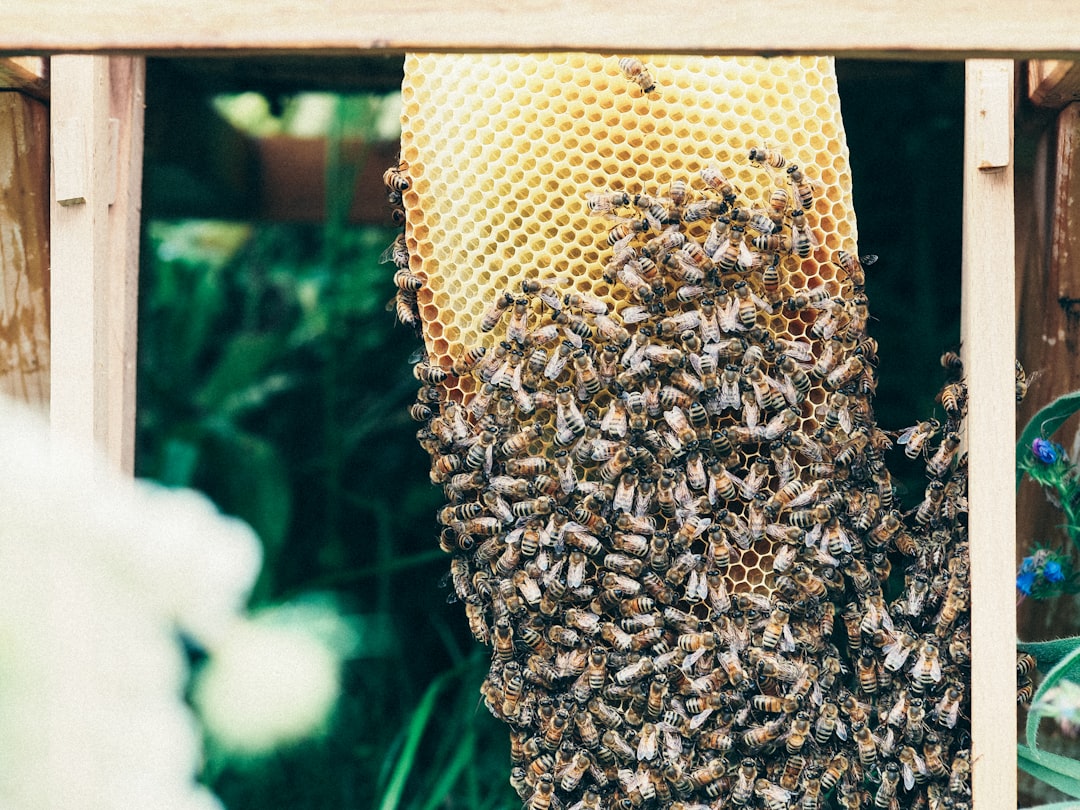Honey bee colonies are fascinating examples of social organization, with a complex hierarchy that ensures the survival and prosperity of the colony. At the heart of this structure are three main castes: the queen, workers, and drones. Each caste plays a vital role in maintaining the colony's health and productivity.
The Roles of the Queen, Workers, and Drones
1. The Queen Bee
-
Role: The queen is the reproductive heart of the colony, responsible for laying eggs to ensure the colony's growth and continuity. She can lay up to 2,000 eggs per day, depending on the colony's needs and her age.
-
Characteristics: The queen is larger than worker bees, with a longer abdomen. She is the only fertile female in the colony and maintains her dominance through pheromones that prevent other females from reproducing.
-
Life Cycle: Queens typically live for about three to five years, although their productivity decreases over time. When a queen ages, the colony may prepare for a new queen by constructing queen cells.
2. Worker Bees
-
Role: Worker bees are sterile females responsible for nearly all tasks within the hive, including:
-
Nursing: Feeding larvae and producing royal jelly.
-
Foraging: Collecting nectar, pollen, and water.
-
Hive Maintenance: Building and repairing honeycomb.
-
Defense: Guarding the hive against predators.
-
-
Characteristics: Workers have specialized physical features such as pollen baskets and wax glands. They communicate through complex dances and pheromones.
-
Life Cycle: Worker bees typically live for about six weeks during the summer, with their roles changing as they age. They start as nurse bees and progress to foragers.
3. Drone Bees
-
Role: Drones are male bees whose sole purpose is to mate with the queen. They do not have stingers and do not collect food, relying on workers for care.
-
Characteristics: Drones have larger bodies and distinctive large eyes that meet at the top of their heads. They are produced from unfertilized eggs laid by the queen.
-
Life Cycle: Drones typically die after mating, as their reproductive organs are torn during the process. In the fall, remaining drones are often expelled from the hive by workers as they prepare for winter.
Social Organization and Communication
Honey bee colonies are highly organized social units, often referred to as "superorganisms." The division of labor among the castes ensures efficient operation of the colony. Communication is key, with bees using pheromones and dances to convey information about food sources, threats, and social hierarchy.
Conclusion
Understanding the roles of the queen, workers, and drones is essential for appreciating the intricate social structure of honey bee colonies. Each caste plays a vital role in ensuring the colony's survival and success. By recognizing these roles, beekeepers can better manage their hives and support the health of these incredible social insects. Whether you're a seasoned beekeeper or just starting out, learning about honey bee social organization can deepen your appreciation for these fascinating creatures.
Citations:
- https://www.mannlakeltd.com/blog/what-is-the-honey-bee-social-structure-and-hierarchy-in-a-colony/
- https://beegood.co.uk/blog/the-different-types-of-honey-bee/
- http://agriallis.com/wp-content/uploads/2024/03/COLONY-ORGANIZATION-AND-SOCIAL-BEHAVIOR-OF-HONEY-BEES.pdf
- https://nuplasapiaristsupplies.com.au/bee-types-workers-drones-queens/
- https://edis.ifas.ufl.edu/publication/IN1102
- https://justbeehoney.co.uk/blogs/just-bee-honey-blog/honeybees-the-difference-between-drones-workers-and-queens
- https://www.apidologie.org/articles/apido/pdf/1998/01/Apidologie_0044-8435_1998_29_1-2_ART0001.pdf
- https://www.mdbka.com/bee-information/

Comments
No comments yet. Be the first to comment!
You must be logged in to comment. Login